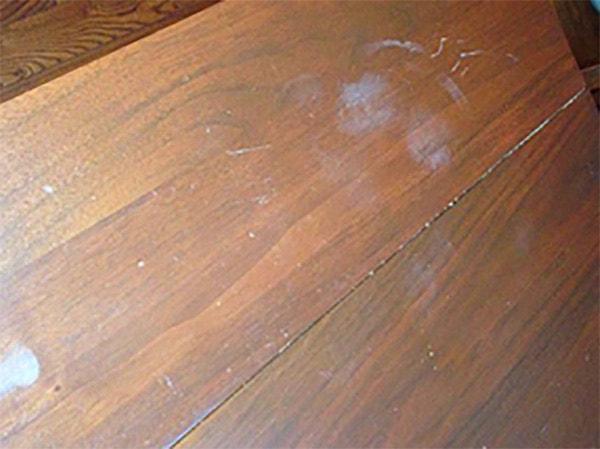How to Refinish an Heirloom Walnut Table?
I recently inherited a 60-year-old drop-leaf black walnut harvest table that was made by my grandfather. His original finish was boiled linseed oil. I know over the years that he had the table, he would occasionally refinish it with the linseed oil. My grandmother would clean the table after a family dinner with a damp cloth. Someone along the way applied water-based polyurethane, I assume directly over the old finish. The result now is a milky finish, made worse by someone placing warm dishes on the table. This has resulted in white marks. I want to refinish the table to its original beauty, but need professional advice, for fear of making it worse. This is a family heirloom that hopefully I will be leaving for my grandchildren. Incidentally, the chairs have the original finish and have held up well. Any assistance you could give me would be very helpful. - Denise Kramer
Tim Inman: Traditional finishes like boiled linseed oil can be very attractive. They often make the most of the natural beauty in wood. They are not very durable over the long haul, though. They never really "dry." They just slow down for a while as they harden, and then they start getting soft and sticky some years later. They self-destruct, if you will. Putting polyurethane over the top of a failing oil finish is quite common to see. But, it is like building a new concrete wall on top of a silting sand base. It doesn't really address the problem. I think that is what you are dealing with on your Grandpa's tabletop.
My suggestion, if you want to do this yourself, is to mask off and protect everything that you feel is in acceptable condition. Then, using a nonflammable paste paint remover, apply the material and strip off the offending finish(es). Carefully wipe away the bad old stuff. Clean with mineral spirits and steel wool. Clean again with mineral spirits and soft CLEAN cloths. Wipe off in one direction only. This prevents the residue from becoming a slush which gets stirred around and rubbed back into the wood. Let the top dry overnight or for a few days. Lightly scuff sand. Fix any dents/problems. Re-stain to enhance color and to match the "new" with the old, then apply new finish. For a durable tabletop, I think polyurethane might be a great choice. This material is available in conventional liquid forms and in gels which can be rubbed in. Remember, the higher the gloss of the new finish, the more the flaws will show. A satin or flat will probably come closer to matching the original oiled look. Test on sample boards first, so you'll know what to expect before you finish your tabletop!
Chris Marshall: Polyurethane, as Tim suggests, is an excellent finish for your table. I finished our kitchen table 10 years ago with oil-based poly, and despite the wear and tear of a busy family with children, that tabletop still is going strong. Too bad in your case the original linseed oil finish and the water-based poly were incompatible. Once the old finish is stripped away, a gel-based polyurethane would be very easy to rub into the tabletop, and you can build up the finish by reapplying as many coats as you like. It dries pretty quickly, too. However, if you need an even higher degree of durability against water rings and spills, I'd probably get a liquid polyurethane instead and brush it on rather than wipe it. Brushing lays down a thicker coat of finish than wiping will. That's what I did for my kitchen table, and I'll do it again when the top finally needs refinishing someday.
Keep the inspiration coming!
Subscribe to our newsletter for more woodworking tips and tricks





